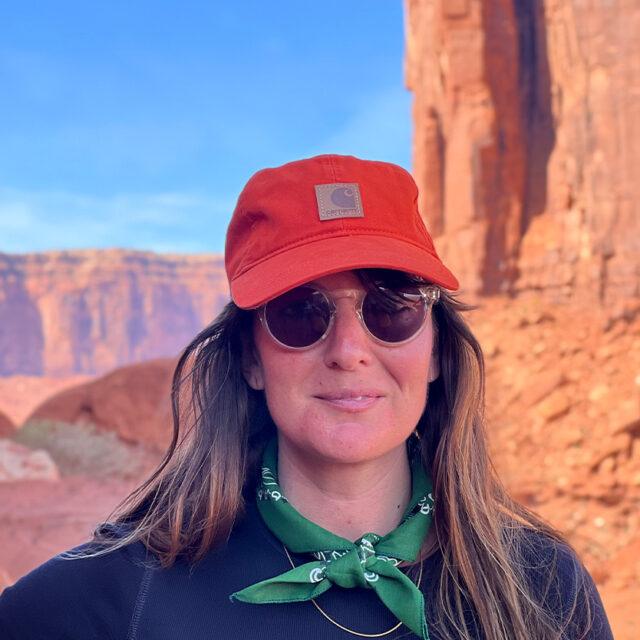All knowing is inherently embodied, fragmented, and incomplete. We come to know something—a rock, a river, a painting—only by advancing and retreating through repeated encounters, approaching the focus of our attention from multiple angles over time. The curatorial path of this project has likewise been one of advance and retreat; seen from above, below, and in between, from New York to New Mexico, from museum storage to the hands of artists and makers, from gallery walls to digital space, from the classroom to the Zoomscape. Uniting these experiences and scales of inquiry is an effort to “know” Diné culture, cosmologies, communities, and practices of making. In trying to constellate its complexities, perhaps there has been a recognition of what remains just out of reach.
Knowing, Making, Naming
Hadley JensenAbout the Author

Hadley Jensen at Monument Valley, Arizona, 2021. Photo: Jesse Merandy.
Hadley Jensen’s research addresses the intersections among fine art, anthropology, and material culture, with a particular focus on Indigenous arts of the North American Southwest. She is currently a research associate at the Museum of Indian Arts and Culture, Santa Fe, New Mexico, and in the Division of Anthropology at the American Museum of Natural History, New York. Her curatorial project Shaped by the Loom: Weaving Worlds in the American Southwest, opening at the Bard Graduate Center Gallery, New York, in spring 2023, is the first exhibition to showcase the American Museum of Natural History’s collection of Diné (Navajo) textiles. Together, she and Rapheal Begay (Diné) are cocurators of Horizons: Weaving Between the Lines with Diné Textiles, opening at the Museum of Indian Arts and Culture in summer 2023. Her work has been supported by the Autry Museum of the American West, Center for Craft, Lunder Institute for American Art, Smithsonian Institution’s National Anthropological Archives and National Museum of Natural History, Terra Foundation for American Art, Textile Society of America, and Wyeth Foundation for American Art. In addition, she has hands-on experience learning Indigenous weaving and natural-dyeing practices, which has strengthened and enlivened her work as an academic researcher, curator, and teacher.